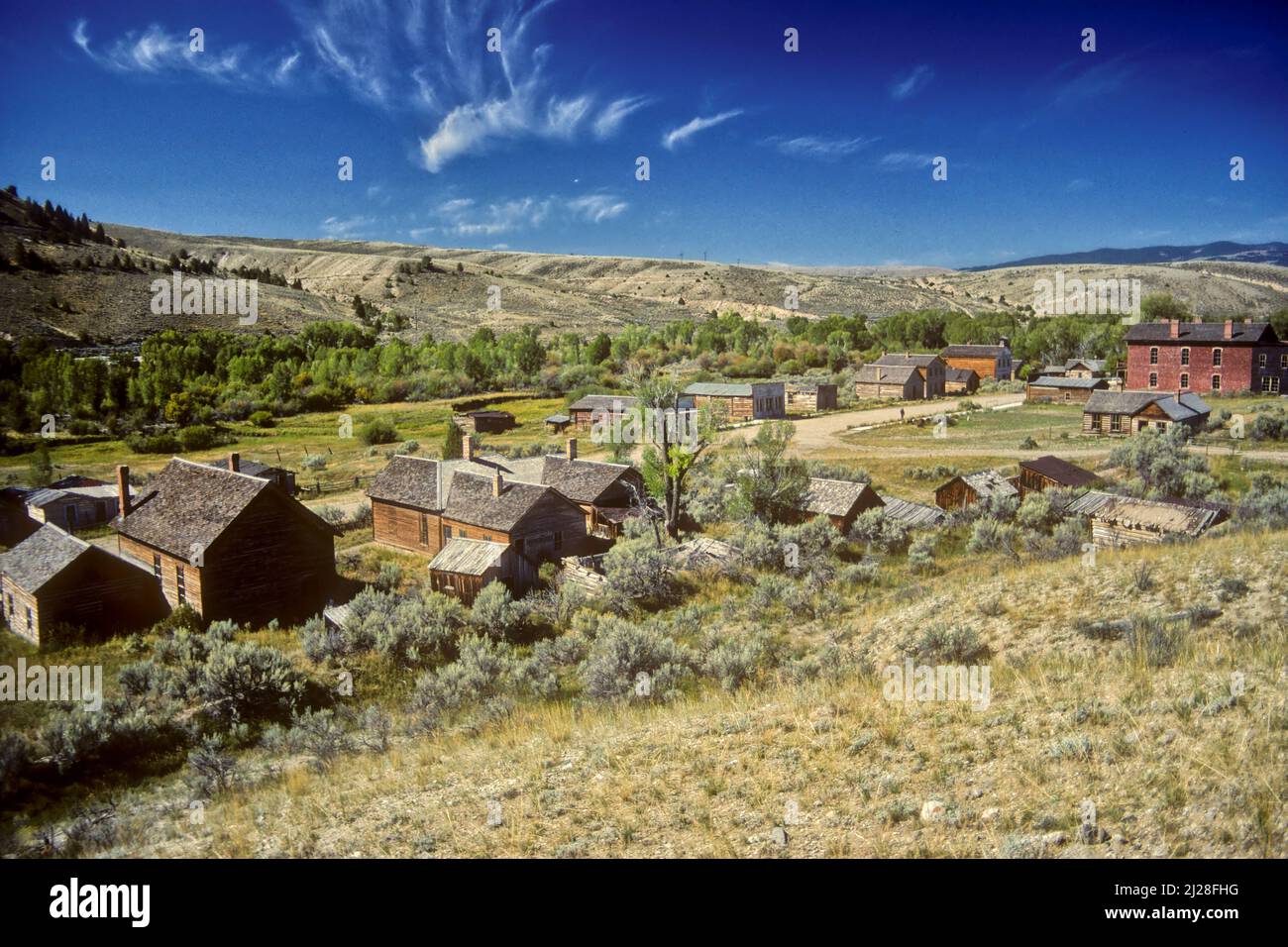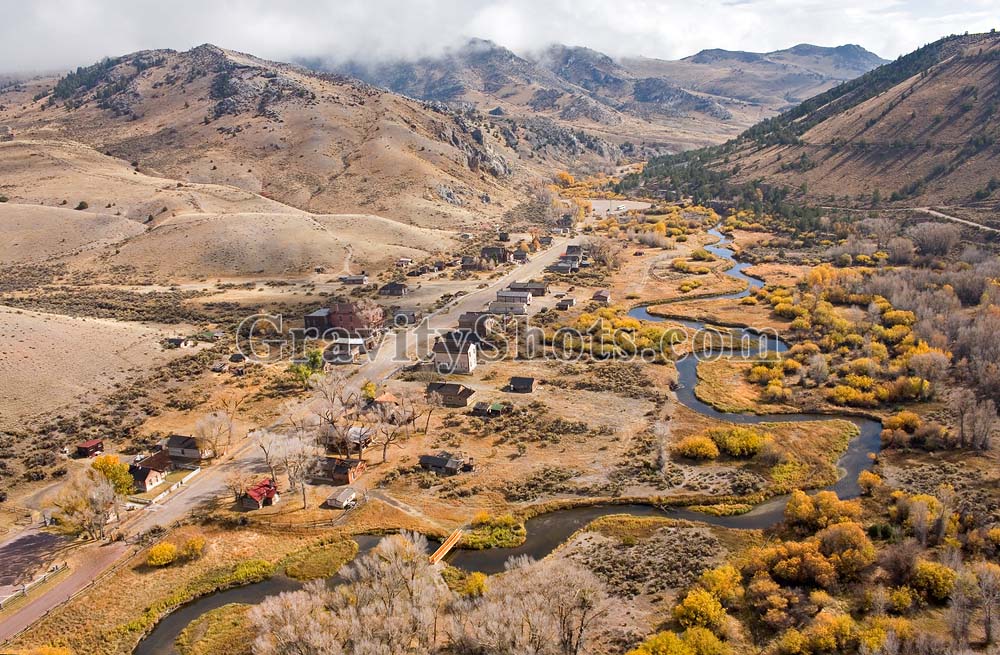
Whispers from the Past: Unearthing America’s Enduring Legends
America, a nation forged in revolution and expansion, is as rich in its spectral tapestry as it is in its documented history. From the bustling metropolises to the desolate, forgotten corners, the landscape hums with tales of the inexplicable, the terrifying, and the wondrous. These are the legends, passed down through generations, etched into the very soil, offering glimpses into the collective fears, hopes, and mysteries that have shaped the American psyche. And nowhere is this more palpable than in the desolate, wind-swept remnants of Bannack, Montana, a ghost town whose very name evokes a shiver, a place where the line between history and haunting blurs into an almost tangible presence.
Our journey into America’s legendary heart begins in this remote corner of the American West, where the spectral whispers of the past are not just folklore but an intrinsic part of the atmosphere. Bannack, established in 1862 after John White’s discovery of gold in Grasshopper Creek, quickly boomed, becoming Montana’s first territorial capital. Its streets, once teeming with prospectors, outlaws, and honest folk seeking their fortune, soon became a stage for greed, violence, and swift justice. It’s a history ripe for haunting, and Bannack delivers with chilling efficacy.
Bannack: Where History’s Echoes Linger

The very air in Bannack feels heavy with unseen presences. Buildings stand preserved in a state of arrested decay, their empty windows gazing out like hollow eyes. Visitors often report a profound sense of being watched, an undeniable chill that penetrates deeper than the Montana winter wind. "It’s not just the cold," explained one visitor, a seasoned paranormal investigator who wished to remain anonymous, in a recent online forum, "it’s an internal cold, like something walks through you. You feel the weight of all the lives lived and lost here."
One of Bannack’s most notorious figures, and a cornerstone of its ghostly lore, is Sheriff Henry Plummer. A man of charisma and cunning, Plummer was eventually unmasked as the leader of a ruthless gang of road agents responsible for countless murders and robberies. His reign ended abruptly in 1864, when a group of vigilantes captured and hanged him, along with two of his associates, at what is now known as Hangman’s Gulch.
The site of Plummer’s execution is a locus of intense paranormal activity. "You can almost hear the creak of the rope, the final gasps," states local historian Mary Beth Calloway, who has extensively researched Bannack’s past. "People report disembodied voices, the feeling of being pushed, and even fleeting glimpses of shadowy figures in old-fashioned clothing near that spot." Some claim Plummer’s vengeful spirit still paces the gulch, eternally replaying his final moments, a silent warning to those who dare to cross the veil.
The Hotel Meade, once a grand establishment boasting a ballroom and the town’s only bathtubs, is another epicenter of ghostly activity. Guests and staff alike have reported phantom footsteps on the stairs, disembodied conversations emanating from empty rooms, and objects moving on their own. The spirit of a young woman named Dorothy, who reportedly drowned in the hotel’s basement, is said to be a frequent presence, sometimes appearing as a misty figure or a fleeting reflection in windows. Her mournful cries have been reported by those brave enough to stay overnight. "The Hotel Meade feels alive, despite being empty," recounted a photographer who spent a night documenting the town. "I distinctly heard a child humming a lullaby from the second floor, but when I went up, there was nothing but silence."
Even the old schoolhouse, with its rows of tiny desks, is not immune. Visitors have claimed to hear children’s laughter, the rustle of papers, and the faint scratching of chalk on a blackboard, all from an empty room. These lingering echoes of a vibrant, if violent, past underscore a fundamental truth about American legends: they are often deeply rooted in historical events, the intense emotions surrounding them imprinting themselves onto the landscape.
Beyond Bannack: A Nation Shrouded in Mystery
Bannack is but a single, stark thread in the grand tapestry of American folklore. From coast to coast, the country is alive with tales that speak to our deepest fears, our enduring curiosity, and our spiritual connection to the land.
The Ancient Ones: Cryptids and Indigenous Lore

Long before European settlers arrived, indigenous peoples wove complex narratives about the spirits and creatures inhabiting their ancestral lands. These tales, rich with wisdom and warning, form the bedrock of many American legends.
Perhaps the most famous of these is Sasquatch, or Bigfoot, a large, ape-like creature said to roam the remote forests of the Pacific Northwest and beyond. Reports of Sasquatch sightings date back centuries in Native American oral traditions, often portraying it as a benevolent, shy guardian of the wilderness. Modern encounters, though often dismissed by mainstream science, persist, fueling documentaries, expeditions, and passionate debates. "The consistent descriptions across disparate cultures and centuries are what give the Sasquatch legend its enduring power," notes Dr. Anya Sharma, a cultural anthropologist specializing in folklore. "It taps into our primal fear of the unknown in the wild, but also our romanticized vision of a creature living harmoniously outside civilization."
Another powerful figure from Native American lore is the Thunderbird, a colossal bird of prey said to control storms and bring rain. Tales of the Thunderbird are found across various tribes, from the Pacific Northwest to the Great Plains, depicting it as a majestic, sometimes terrifying, force of nature. Its immense wingspan and glowing eyes are said to be visible during violent storms, embodying the raw, untamed power of the natural world that shaped early American existence.
Colonial Echoes and Frontier Frights
As European settlers spread across the continent, they brought their own superstitions and fears, blending them with the mysteries of the new world. The Headless Horseman of Sleepy Hollow, immortalized by Washington Irving, is a prime example. Rooted in European folklore, the tale of the spectral Hessian trooper, endlessly searching for his lost head, perfectly captures the eerie, melancholic beauty of the Hudson Valley and the lingering anxieties of a young nation still finding its footing. It speaks to the fear of the unknown, the lingering specters of war, and the vulnerability of the individual against forces beyond their comprehension.
The vast American frontier, with its promise of fortune and its brutal realities, gave birth to countless legends of lost mines, spectral cowboys, and phantom trains. The Lost Dutchman Gold Mine, hidden deep within Arizona’s Superstition Mountains, is perhaps the most famous. Generations have searched for its fabled riches, often meeting with misfortune, madness, or even death, leading to tales of ancient curses and vengeful spirits guarding the gold. The mountains themselves are said to be haunted by the spirits of those who died in their pursuit, their ghostly cries echoing through the canyons.
Modern Mysteries and Cryptid Curiosities
Even in the modern age, America continues to birth new legends. The Mothman of Point Pleasant, West Virginia, burst onto the scene in the mid-1960s. Described as a large, winged creature with glowing red eyes, its sightings were often correlated with strange occurrences and, most famously, the tragic collapse of the Silver Bridge in 1967. For many, Mothman remains a terrifying harbinger of disaster, a creature whose appearance signals impending doom, a modern-day oracle of ill omen.
And then there’s the Jersey Devil, a creature of nightmare said to inhabit the desolate Pinelands of Southern New Jersey. Its legend dates back to the 18th century, born from the tale of a cursed 13th child of a local woman known as Mother Leeds. Described as a bipedal creature with a horse-like head, bat-like wings, and cloven hooves, the Jersey Devil has been blamed for livestock mutilations, strange noises, and terrifying encounters for centuries, a testament to the enduring power of local folklore in even the most urbanized regions.
The Enduring Power of the Unknown
These legends, from the spectral whispers of Bannack to the shadowy figures of the wilderness, are more than mere campfire tales. They are cultural touchstones, reflecting America’s tumultuous history, its diverse populations, and its deep-seated fascination with the unexplained. They are our collective subconscious, wrestling with the untamed, the inexplicable, and the echoes of our past.
In a nation that often prides itself on progress and scientific advancement, these legends serve as a powerful reminder that there are still mysteries beyond our grasp. They invite us to look closer, to listen to the old stories, and to consider that perhaps, the boundaries of our known world are far more permeable than we imagine. As the wind howls through the empty buildings of Bannack, or the mist clings to the ancient forests, the legends remind us that America’s story is far from complete, and its greatest mysteries may yet lie hidden, waiting for those brave enough to seek them out.


